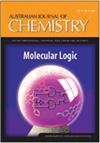三维MXene结构的新设计策略及其在金属离子混合电容器中的应用
IF 0.9
4区 化学
Q4 CHEMISTRY, MULTIDISCIPLINARY
引用次数: 0
摘要
MXene是一种新型的二维材料,由于其高导电性、良好的分散性和丰富的表面官能团,在能量存储和转换应用中表现出优异的竞争性能。然而,MXene纳米片之间的范德华相互作用往往导致堆叠,这限制了活性位点的数量和离子动力学。将MXene材料构建成三维(3D)多孔结构是通过增加比表面积和孔隙率,减少离子传输距离来提高储能性能的有效策略。本文综述了近5年来(2019-2023年)制备三维MXene材料的四种新型设计策略,包括模板法、3D打印法、静电纺丝法和气体辅助法,并探讨了三维MXene结构在新型金属离子混合电容器储能系统中的潜在应用。最后,对三维MXene结构的发展进行了展望。本文章由计算机程序翻译,如有差异,请以英文原文为准。
Novel design strategies of three-dimensional MXene structures and their applications in metal-ion hybrid capacitors
MXene is a novel two-dimensional material that exhibits excellent competitive performance in energy storage and conversion applications due to its high electrical conductivity, good dispersibility, and abundant surface functional groups. However, the van der Waals interactions between MXene nanosheets tend to lead to stacking, which limits the number of active sites and ion dynamics. Constructing MXene materials into three-dimensional (3D) porous structures is an effective strategy to improve energy storage performance by increasing specific surface area and porosity, and decreasing ion transport distance. This review provides an overview of four novel design strategies for preparing three-dimensional MXene materials, including template-based, 3D printing, electrospinning, and gas-assisted methods, over the last 5 years (2019–2023), and explores the potential applications of 3D MXene structures in the new-type energy storage systems of metal-ion hybrid capacitors. Finally, the authors provide prospects for the future development of 3D MXene structures.
求助全文
通过发布文献求助,成功后即可免费获取论文全文。
去求助
来源期刊

Australian Journal of Chemistry
化学-化学综合
CiteScore
2.50
自引率
0.00%
发文量
65
审稿时长
1.3 months
期刊介绍:
Australian Journal of Chemistry - an International Journal for Chemical Science publishes research papers from all fields of chemical science. Papers that are multidisciplinary or address new or emerging areas of chemistry are particularly encouraged. Thus, the scope is dynamic. It includes (but is not limited to) synthesis, structure, new materials, macromolecules and polymers, supramolecular chemistry, analytical and environmental chemistry, natural products, biological and medicinal chemistry, nanotechnology, and surface chemistry.
Australian Journal of Chemistry is published with the endorsement of the Commonwealth Scientific and Industrial Research Organisation (CSIRO) and the Australian Academy of Science.
 求助内容:
求助内容: 应助结果提醒方式:
应助结果提醒方式:


